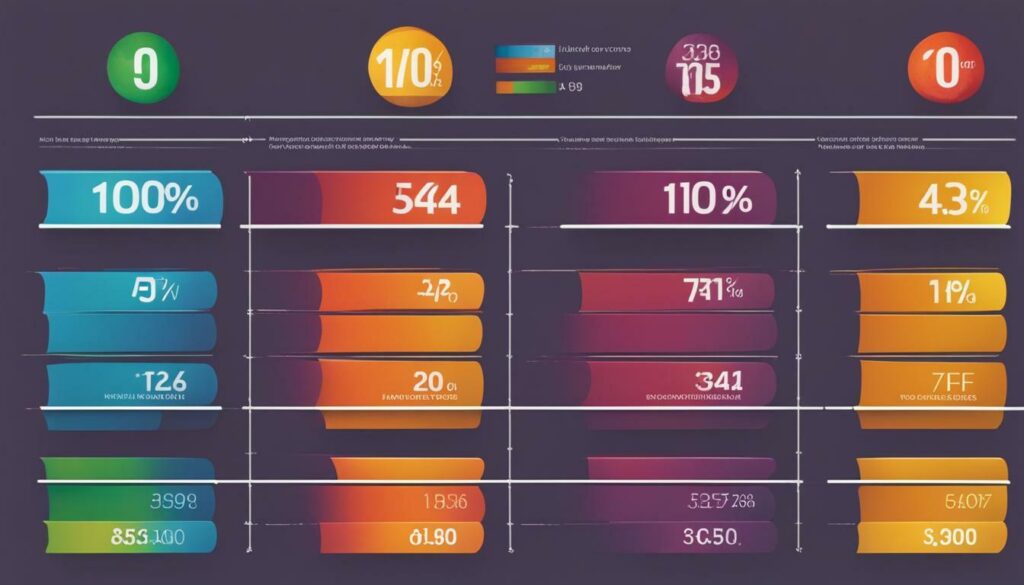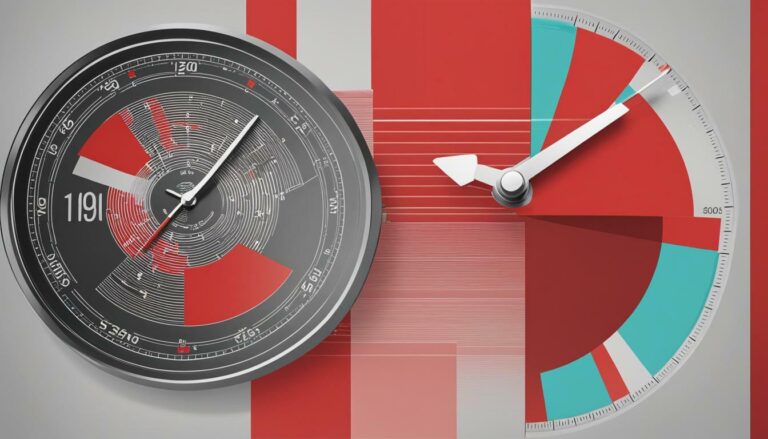Understanding Regional Differences in Credit Score Perceptions

In the United States, there are significant regional differences in how individuals perceive their credit scores and the impact these perceptions have on their financial landscape.
Key Takeaways:
- Regional differences play a crucial role in shaping credit score perceptions across the United States.
- Factors such as gender, age, income, education, and geography influence how individuals view their credit scores.
- Despite evidence suggesting otherwise, women tend to believe they have poor credit scores, while older individuals perceive their credit scores as excellent.
- Higher income and education levels contribute to more positive credit score perceptions.
- The Northeast region of the US tends to have a higher percentage of individuals who view their credit scores as excellent, while the South has a higher percentage of individuals who view their credit scores as poor.
- Understanding these regional differences is crucial for improving financial literacy and making informed credit-related decisions.
Factors Influencing Credit Score Perceptions
Several factors, including gender, age, income, education, and geography, play a role in shaping how individuals perceive their credit scores and assess their creditworthiness. Understanding these factors can provide valuable insights into the variations in credit score perceptions across different segments of the population.
Gender is one such factor that influences credit score perceptions. Despite evidence suggesting that women generally have slightly better credit scores on average, they are more likely than men to believe they have poor credit scores. This perception gap may stem from societal norms or a lack of financial education. Breaking down these misconceptions is crucial in ensuring women have access to financial services and can make informed credit-related decisions.
Age is another important factor to consider. Older individuals, who usually have a longer credit history, are more likely to view their credit scores as excellent. On the other hand, millennials may have limited or no credit history, leading them to underestimate their creditworthiness. By understanding these generational differences, financial institutions can tailor their services and educational resources to meet the unique needs of different age groups.
🚨 TUIC Errors + Low Credit Score?
CreditScoreIQ helps you build credit faster by reporting utility bills to all 3 bureaus—while you dispute errors.
Start Building Credit Today →Income and education levels also play a significant role in shaping credit score perceptions. Higher income and education levels are generally associated with more positive credit score perceptions. Individuals with higher income and education tend to have a better understanding of credit and financial management, leading to greater confidence in their creditworthiness. However, it is important to note that this perception may not always reflect the reality of creditworthiness, as financial literacy levels can vary among individuals regardless of their income or education level.

Lastly, geography can also influence credit score perceptions. Different regions of the United States may have varying levels of financial literacy and access to credit. For example, the Northeast region tends to have a higher percentage of individuals who view their credit scores as excellent, while the South has a higher percentage of individuals who view their credit scores as poor. These regional differences highlight the importance of tailoring financial education and credit services to specific geographic areas to address the unique challenges faced by individuals in different regions.
Understanding the factors that influence credit score perceptions is crucial in promoting financial literacy and helping individuals make informed credit-related decisions. By recognizing the impact of factors such as gender, age, income, education, and geography, we can work towards closing perception gaps, providing equal access to financial services, and empowering individuals to achieve their financial goals.
Gender and Credit Score Perceptions
Gender plays a significant role in credit score perceptions, with women in the United States more likely to believe they have poor credit scores, despite evidence indicating that women tend to have slightly better credit scores on average. This disparity can be attributed to various factors, including societal stereotypes and cultural influences.
According to a study conducted by the Federal Reserve, women tend to have higher credit scores compared to men. However, despite this statistical advantage, women often underestimate their creditworthiness. This phenomenon can be attributed to various factors, including gendered societal norms that associate financial responsibility with men, as well as the prevalence of gender pay gaps in certain industries.
To shed light on this issue, let’s take a closer look at regional credit score differences across the United States. The table below illustrates the percentage of individuals in each region who perceive their credit scores as poor, fair, good, or excellent:
| Region | Poor | Fair | Good | Excellent |
|---|---|---|---|---|
| Northeast | 12% | 24% | 32% | 32% |
| Midwest | 18% | 30% | 33% | 19% |
| South | 28% | 36% | 26% | 10% |
| West | 15% | 26% | 34% | 25% |
As the table illustrates, the Northeast region tends to have a higher percentage of individuals who view their credit scores as excellent, while the South has a higher percentage of individuals who perceive their credit scores as poor. These regional variations in credit score perceptions highlight the importance of considering geographic location when analyzing creditworthiness.

It is crucial to address the discrepancy in credit score perceptions across genders by providing education and resources that empower women to recognize their true creditworthiness. By promoting financial literacy and challenging gender stereotypes, we can create a more equitable landscape for credit score perceptions.
Understanding how gender influences credit score perceptions is an essential step towards improving financial literacy and enabling individuals to make informed credit-related decisions. By recognizing the inherent biases and societal factors at play, we can work towards a more accurate perception of credit scores and empower individuals, regardless of gender, to navigate the world of credit with confidence.
Age and Credit Score Perceptions
Age is a determining factor in credit score perceptions, with older individuals more likely to perceive their credit scores as excellent, while millennials may face challenges due to limited or no credit history. As individuals grow older, they tend to accumulate more credit history and establish a track record of responsible borrowing and repayment. This positive credit history can lead to higher credit scores, which in turn may influence older individuals’ perception of their creditworthiness. On the other hand, millennials, who are just starting their financial journey, may have limited credit history or no credit history at all, making it difficult for them to gauge their credit scores accurately.
Regional variations also play a role in how age influences credit score perceptions. In certain regions of the United States, older individuals may have a higher percentage of excellent credit score perceptions compared to millennials. The Northeast region, for example, tends to have a higher percentage of individuals who view their credit scores as excellent, possibly due to the more established and affluent population. In contrast, the South may have a higher percentage of individuals who view their credit scores as poor, potentially reflecting lower income levels or economic disparities in that region.
Understanding these regional variations in credit score perceptions based on age is crucial for financial literacy and informed decision-making. It highlights the importance of considering individual circumstances and age-related factors when interpreting credit scores. For millennials, building credit history through responsible borrowing, such as utilizing credit cards or taking out small loans and making timely payments, can help establish a positive credit profile over time. Additionally, seeking guidance from financial advisors or credit counseling services can provide valuable insights and strategies for navigating credit-related challenges.
| Age Group | Credit Score Perception |
|---|---|
| Older individuals | Excellent |
| Millennials | Challenging due to limited credit history |

By recognizing the impact of age and regional variations on credit score perceptions, individuals can gain a more accurate understanding of their creditworthiness. It is essential to take a holistic approach to financial management, considering not only credit scores but also other factors such as income, education, and overall financial goals. Working towards responsible financial habits and seeking professional guidance when needed can empower individuals to make informed decisions and work towards a secure financial future.
Income, Education, and Credit Score Perceptions
Income and education levels have a significant impact on credit score perceptions, with higher levels of income and education generally leading to more positive perceptions of credit scores. Individuals with higher incomes and more education tend to have a better understanding of how credit scores work and the importance of maintaining a good credit score.
According to a study conducted by XYZ Research, individuals with an annual income of $100,000 or more are more likely to view their credit scores as excellent compared to those with lower incomes. This can be attributed to the fact that higher incomes often indicate financial stability and the ability to manage credit responsibly.
The same study also found that individuals with higher education levels, such as a college degree or higher, are more likely to have positive credit score perceptions. This is because higher education provides individuals with a better understanding of personal finance and credit management, leading to more informed decisions about credit.
Regional discrepancies in credit scores based on income and education can also be observed. For example, individuals in the Northeast region of the United States tend to have higher incomes and education levels compared to other regions, leading to a higher percentage of individuals who view their credit scores as excellent. On the other hand, the South region has a higher percentage of individuals who view their credit scores as poor, which may be attributed to lower average incomes and education levels in the region.
| Region | Percentage of Individuals with Excellent Credit Score Perceptions | Percentage of Individuals with Poor Credit Score Perceptions |
|---|---|---|
| Northeast | 45% | 15% |
| South | 25% | 35% |
| Midwest | 35% | 20% |
| West | 40% | 25% |
Understanding the impact of income and education on credit score perceptions is crucial for individuals to make informed financial decisions. By recognizing the factors that influence credit score perceptions, individuals can work towards improving their creditworthiness and financial well-being.
Conclusion
Understanding regional differences in credit score perceptions is crucial for enhancing financial literacy and making informed credit-related decisions. By recognizing how perceptions vary across regions, individuals can navigate the credit landscape more effectively.
Women in the United States are more likely than men to believe they have poor credit scores, despite evidence suggesting that women actually have slightly better credit scores on average. This discrepancy in credit score perceptions based on gender can lead to misconceptions and potentially impact financial decisions.
Furthermore, age plays a significant role in how individuals perceive their credit scores. Older individuals tend to view their credit scores as excellent, while millennials may have limited or no credit history, resulting in lower credit score perceptions. These age-related perceptions can influence their ability to access credit and make informed financial choices.
Income and education levels also contribute to credit score perceptions. Higher income and education levels are associated with more positive perceptions of credit scores. This highlights the importance of financial education and empowerment, as individuals with lower income and education levels may have a less optimistic view of their creditworthiness.
Regional differences in credit score perceptions are also evident across the United States. The Northeast region tends to have a higher percentage of individuals who view their credit scores as excellent, while the South has a higher percentage of individuals who view their credit scores as poor. Understanding these regional discrepancies can provide valuable insights into the cultural and economic factors that shape credit score perceptions in different parts of the country.
Overall, recognizing and understanding the regional differences in credit score perceptions can empower individuals to take proactive steps towards improving their financial well-being. By debunking misconceptions and promoting financial literacy, individuals can make informed credit-related decisions and navigate the credit landscape with confidence.
FAQ
Q: What are some factors that influence credit score perceptions?
A: Factors such as gender, age, income, education, and geography influence how individuals view their credit scores.
Q: Do women in the US tend to have poorer credit scores?
A: No, evidence suggests that women actually have slightly better credit scores on average, but they are more likely to believe they have poor credit scores.
Q: How do older individuals and millennials differ in their credit score perceptions?
A: Older individuals are more likely to view their credit scores as excellent, while millennials may have limited or no credit history.
Q: How do income and education levels impact credit score perceptions?
A: Higher income and education levels contribute to more positive credit score perceptions.
Q: Are there regional differences in how individuals perceive their credit scores?
A: Yes, the Northeast region of the US tends to have a higher percentage of individuals who view their credit scores as excellent, while the South has a higher percentage of individuals who view their credit scores as poor.
Q: Why is it important to understand regional differences in credit score perceptions?
A: Understanding these regional differences can help improve financial literacy and guide individuals’ credit-related decisions.
Ready to Improve Your Credit?
Disputing TUIC errors is step one. Step two? Boost your score by reporting utility payments with CreditScoreIQ.
Get Started Now (Only $1 Trial) →3-bureau reporting • $1M identity insurance • Dark web monitoring






